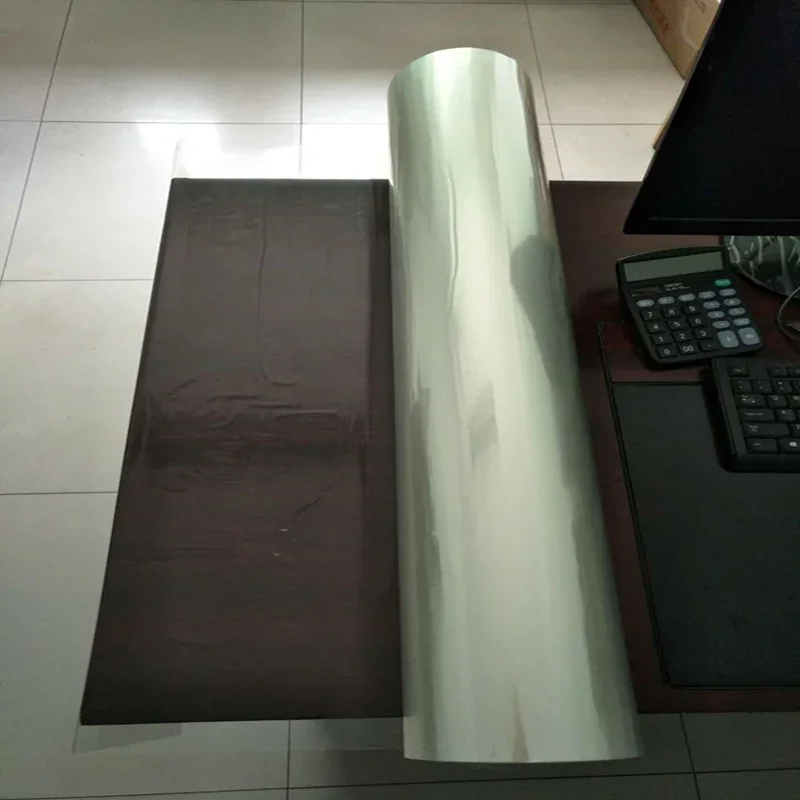Have you ever heard of a film that can biodegrade and explore different application fields? Look no further than Polylactic Acid films, also known as PLA films. These innovative films have been gaining popularity due to their eco-friendliness and versatility in various industries. In this blog post, we will explore the different types of Polylactic Acid films, their applications, advantages, and how to use them effectively. Join us on this journey to discover the exciting possibilities with PLA films!
The Different Types of Polylactic Acid Films
Polylactic Acid films, or PLA films for short, come in various types to accommodate different needs and applications. One type of PLA film is the cast film, which has excellent clarity and good tear resistance. Cast films are ideal for food packaging, where they can showcase the product while providing a protective barrier.Another type of PLA film is the blown film, known for its high strength-to-weight ratio and puncture resistance. Blown films are commonly used as shrink wrap for consumer goods such as electronics and toys.Extruded PLA films are another popular type that offers superior stiffness and impact resistance. They are often utilized in industrial applications such as automotive parts or building materials.A recent innovation includes laminated PLA films that combine plant-based polymers with other materials like paper or aluminum foil to create durable yet environmentally-friendly packaging solutions.Each type of Polylactic Acid film brings unique features to the table making it essential to consider your application’s specific requirements before deciding on which one best suits your needs!
The Applications of Polylactic Acid Films
Polylactic acid (PLA) films are versatile and can be used in various applications. One of the most popular uses for PLA films is in food packaging. Due to its biodegradability, it is a great alternative to traditional plastic packaging that often ends up polluting our environment.Another application of PLA films is in agriculture. These films can be used as mulches or covers, helping farmers retain moisture and control weed growth while also being biodegradable.PLA films have also found their way into the medical industry. They can be used for surgical sutures, wound dressings, and drug delivery systems due to their biocompatibility and ability to degrade within the body over time.In addition, PLA films have been explored for use in electronics and textiles industries as well. In electronics, they could potentially replace traditional plastics in circuit boards while textile companies may consider using it as an eco-friendly alternative to synthetic fibers like polyester.The potential applications of polylactic acid films are vast and continue to expand with advancements in technology and research.

The Advantages of Polylactic Acid Films
Polylactic acid (PLA) films are becoming increasingly popular due to their numerous advantages. First and foremost, these films are made from renewable resources such as corn starch or sugarcane, making them an eco-friendly alternative to traditional plastic films.In addition to being biodegradable and compostable, PLA films also offer excellent barrier properties against moisture and oxygen, which is important for food packaging applications. They can be used in a variety of applications including food packaging, medical devices, agriculture, textiles and more.Another advantage of PLA films is that they can easily be processed using conventional film processing equipment with minimal modification needed. This makes it easy for manufacturers to switch from traditional petroleum-based plastics over to PLA without having to invest in new machinery or processes.Moreover, the transparency of polylactic acid films allows them to showcase products effectively while maintaining freshness by preventing spoilage through air-tight sealing. They provide adequate product protection while retaining visual appeal.The benefits of using polylactic acid film versus traditional plastic film are clear: improved sustainability practices at every step of production along with increased functionality make this choice an easy one!
How to Use Polylactic Acid Films
When it comes to using polylactic acid (PLA) films, there are a few things you need to keep in mind. First and foremost, it's important to note that these films are not suitable for all types of packaging applications due to their lower heat resistance compared to traditional plastics.If you're planning on using PLA films for food packaging, be sure the film is approved for direct contact with food. Additionally, be mindful of the temperature at which your product will be stored or transported as PLA can begin to break down at higher temperatures.When it comes to printing on PLA films, make sure your ink or labeling process is compatible with this material. Some traditional printing methods may not work well with PLA and could result in smudging or other issues.When disposing of used PLA films, remember that they are biodegradable but require specific conditions in order to break down properly. Be sure to dispose of them according to local regulations and guidelines.While there are some limitations when working with polylactic acid films, they can provide an eco-friendly alternative for certain packaging applications if used correctly.
Conclusion
Polylactic acid films have proven to be a versatile and eco-friendly alternative to traditional plastic films. With their biodegradability and ease of use, they are becoming increasingly popular in various fields such as food packaging, agriculture, and medical applications.Their high strength and durability make them suitable for a wide range of products while still remaining environmentally conscious. Additionally, the process of manufacturing polylactic acid films has shown to have lower carbon emissions compared to other plastics.As more companies become aware of the environmental impact that traditional plastics have on our planet, it's exciting to see an increase in demand for sustainable alternatives like polylactic acid films. It's clear that these innovative materials will play an essential role in shaping the future of packaging and product design.By exploring new ways to incorporate polylactic acid into different industries successfully, we can continue making strides towards a more sustainable future for generations to come. Let us embrace this technology with open arms as we strive towards a cleaner planet!CHANGZHOU GREEN CRADLELAND MACROMOLECULE MATERIALS CO., LTD was founded in 2011 and is a professional high-tech industrial company focused on RD, manufacturing and exporting pva water soluble film, pva water soluble packaging bags, pva water soluble nonwoven fabric and pla biodegradable materials.lucifer@pvalzy.com






